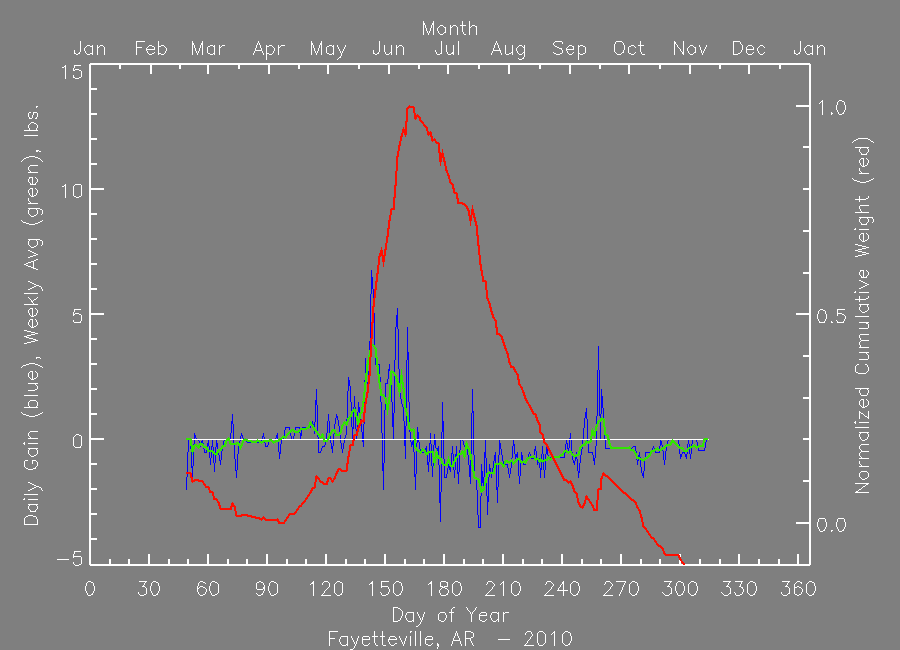I discovered something interesting today. NASA keeps track of hive weights around the country. By knowing your flows, you can better manage your hives.
Here's a record from my local area:
I have historically harvested honey in June. Seeing this graph tells me to make sure I leave enough honey for the bees to make it through the rest of the year because there's no more honey to be had. Apparently the earlier flow is black locust in April and white Dutch clover becomes available in substantial measure in May.
As a side note, comparing this area to others, this is a really ugly area to keep bees. No wonder there are no commercial beekeepers around here.
Check out your own area at: http://honeybeenet.gsfc.nasa.gov/Sites/national_map.htm Know your flows!
Here's a record from my local area:
I have historically harvested honey in June. Seeing this graph tells me to make sure I leave enough honey for the bees to make it through the rest of the year because there's no more honey to be had. Apparently the earlier flow is black locust in April and white Dutch clover becomes available in substantial measure in May.
As a side note, comparing this area to others, this is a really ugly area to keep bees. No wonder there are no commercial beekeepers around here.
Check out your own area at: http://honeybeenet.gsfc.nasa.gov/Sites/national_map.htm Know your flows!

